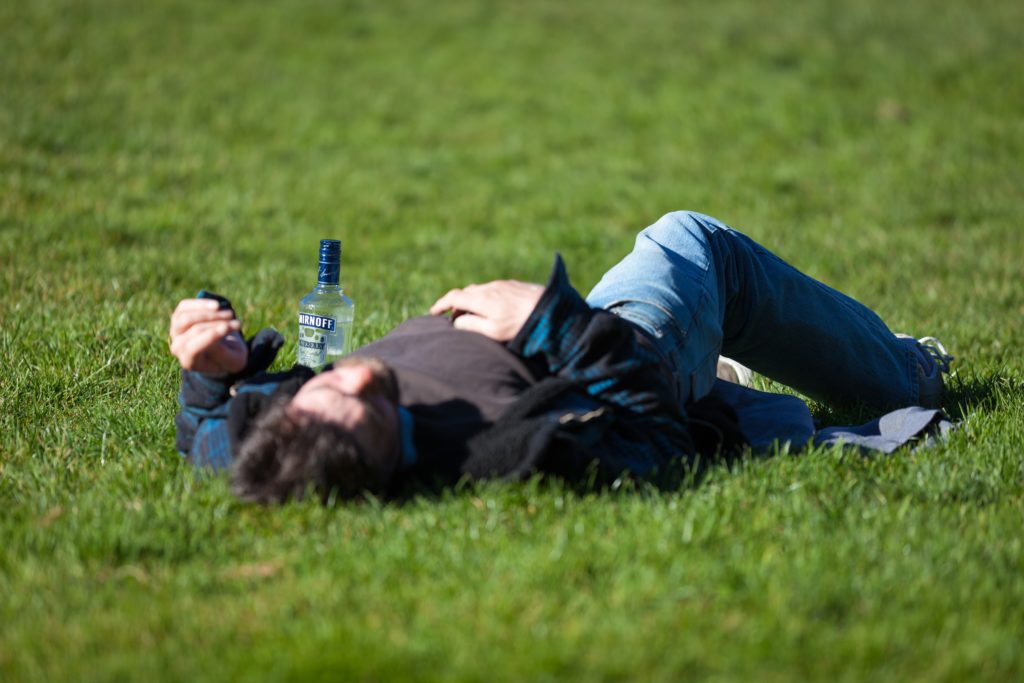
When Kim opens the fridge and sees the bottle of champagne, a thought appears. Brushstrokes painted this thought onto a non-declarative memory long ago.
‘See a bottle of champagne, drink it.’
‘The bubbles.’
‘The pomp.’
‘The increase in status.’
Kim closed the fridge, recognised her trigger, made her excuses and left her position as a temporary barmaid, and headed home.
She did not drink that night.
But she did drink.
It took a week for her Resistance to turn that initial thought into a tsunami of opinion.
She stood no chance.
People rarely do.
Kim is a member of a community that I run designed to help people to manage alcohol addiction. I am sharing her story, after reading a Bill Perkins tweet on the carnage that alcohol is currently creating across Europe.
Perkins initially tweeted an article in Bloomberg entitled: “Europe Needs to Cut Back on the Booze,” emanating from a 2016 report from the World Health Organisation (WHO), on the effects of alcohol across Europe.
From that article:
“Europeans are the heaviest drinkers in the world, according to a new World Health Organization report. Alcohol killed 291,000 people in 30 European countries in 2016, more than ten times the number of deaths caused by traffic accidents in the European Union that year. The U.S. opioid epidemic only kills about a quarter as many people every year.”
An even more damning report came from WHO when posting their 2014 global findings that alcohol-related deaths accounted for 3.3m lost souls, and is a causal factor in more than 200 illnesses and diseases.
3.3m is a lot of dead people, and what’s interesting about that figure, is it’s more than homicide, war and terrorism combined. The Bloomberg report was right to compare the opioid death rates with alcohol because we need to start thinking about what’s going on here. A terrorist mounts the pavement in London; mows down six people, killing them outright, and it makes worldwide news – yet nothing on alcohol-related deaths.
Why is that, and why should we care?
Following in Your Parents Footsteps, Not.
It’s rare for a professional poker player to want their children to follow in their footsteps. When you consider that pro poker players have freedom, get to travel, don’t have a boss, can choose their hours – why wouldn’t you want you, child, to do what you do?
The most popular reason for not wanting their offspring to turn into the next Alex Foxen or Kristen Bicknell is: ‘the poker life is too hard’. If this is the case, you can bet your flop, turn and river that anxiety, stress and depression are not too far behind.
Learning About Vulnerability From Bryn Kenney’s Mum
During the final table of the Triton Million London, I was fortunate enough to spend the entirety of my time sitting next to Bryn Kenney’s mum, Carol. During our conversation, we talked about the role that vulnerability plays in poker, and she pulled out a tattered copy of Daring Greatly by Brené Brown, the vulnerability master.
In that book, Brown points out the trending view that narcissism has reached epidemic proportions.
From that book:
“The topic of narcissism has penetrated the social consciousness enough that most people correctly associate it with a pattern of behaviours that include grandiosity, a pervasive need for admiration, and a lack of empathy.”
More from Brown.
“What almost no one understands is how every level of severity in this diagnosis {narcissism} is underpinned by shame.”
Shame?
Where does shame come from, and how does it relate to narcissism? Brown believes that we currently live in an environment fuelled by advertisements, discourse, and social media posts, creating a culture of scarcity.
In short, we are ‘never enough’.
Never good enough.
Never perfect enough.
Never thin enough.
Never successful enough.
Never smart enough.
Never rich enough.
And our scarcity culture makes being ‘ordinary’ an aberration. The shame-based fear of being ordinary is fanning our narcissistic tendencies and with it our over-inflated egos.
Who Wants to be a Purple Cow
When I take my daughter to London on the train, we both get excited when we see a field full of cows. Then after a while, the excitement drifts away like confetti the day after a wedding, when the sameness bores us.
Imagine if we saw a purple cow, standing amid a herd of Friesians.
Wouldn’t that make you stand up and take notice?
Marketing guru, Seth Godin, wrote a book called ‘The Purple Cow: Transform Your Business,” where he urges entrepreneurs and small business owners, to create their purple cows.
Bryn Kenney is a purple cow.
But here’s the thing.
Being the purple cow creates intense pressure because you exist in a community that wants you to ‘fit-in’. Then you have the Friesians who desperately want to be a purple cow but can’t get passed the cattle prods that keep them on the path of least resistance.
Here are those three cattle prods:
1. Shame
Jump onto Twitter, follow the poker community, and watch shaming, finger-pointing and blaming in full flow.
2. Comparison
The Global Poker Index, The Hendon Mob All-Time Money List, comparisons between peers in the media and on social media, GTO v non-GTO styles and the kickback if you don’t follow one or the other.
3. Disengagement
Are we afraid to take risks? Is it easier to remain quiet than to be vocal? Are we comfortable in our environment, and doing what we do? Do we spend enough time outside of poker?
Building Shame Resilience
Brené Brown defines shame as follows.
“Shame is the intensely painful feeling of experience of believing that we are flawed and therefore, unworthy of love and belonging.”
Her research found 12 shame categories.
- Appearance and body image
- Money and work
- Parenting
- Motherhood/fatherhood
- Family
- Mental and physical health
- Addiction
- Sex
- Ageing
- Religion
- Trauma
- Being stereotyped or labelled
To fight shame, Brown believes we have to cultivate armour known as ‘shame-resilience.’
The first port of call, if you want to develop shame resilience, is to learn to be vulnerable – to share your stories, pain and suffering. To do that, you need to feel like you belong to a tribe that practices in mutual trust and empathy.
And that’s where drinking alcohol comes in.
Numbing
There are many reasons why people drink alcohol. The core reason is that our culture dictates that it’s both ‘normal’ and ‘pleasurable’ to drink it. Despite the labelling as one of the top five most addictive drugs in the world. It’s the only drug where you are actively encouraged by your peers to take it, and ostracised if you don’t.
I work with people who struggle with alcohol addiction. Kim, the young lady who opened this story, works with me daily. When she saw the bottle of champagne in the fridge that day, she didn’t want to drink it because it tasted sweet. Kim wanted to drink it because she didn’t feel like she belonged in her environment.
It wasn’t an isolated problem for Kim.
Kim doesn’t feel like she belongs in the more familiar environment of her home and work, and doesn’t feel like she belongs in her skin. And Kim is not alone. I see this in people all of the time. Something happened when a person was younger that confirmed that they didn’t ‘belong’ or ‘fit-in,’ a sense of shame developed, and over time drinking alcohol became an effective way of numbing.
But what are we numbing?
Surface level thinking assumes it’s our thoughts, but what we’re numbing is our vulnerability. But alcohol consumption as a numbing agent is a double-edged sword. Not only will it numb our negative thoughts and feelings, but our positive ones.
“You numb the dark, you numb the light.” Brené Brown.
I applaud Perkins for pointing out the WHO report; shining a light on a critically important issue in the world, today. But it’s not the 3.3m deaths per year that concerns me the most. It’s the billions adversely affected by alcohol that the WHO never reports on.
People like Kim.
People like me.
People like the person who wrote to me the other day to say that he keeps blowing his poker winnings in the casino when he’s drunk.
The masses describe these people as ‘functional alcoholics.’ I hate that term. In my experience, we should start describing them as ‘normal.’
It’s not unusual for someone to be a member of a poker tribe, be seen to have plenty of friends, and thousands of social media followers, and feel entirely unseen and unheard because of a lack of connection.
“For many of us, the literal chemical anaesthetizing of emotions is just a pleasant, albeit dangerous, side effect of behaviours that are more about fitting in, finding connection and managing anxiety.”
A question I used to ask poker players was, “Who is the best?” I don’t ask it anymore. The consensus is little separates the very best. Ike Haxton v Stephen Chidwick. Justin Bonomo v Nick Petrangelo. Dominik Nitsche v Steffen Sontheimer. There’s nothing between them.
If this is the case, I will put my money on the player who has his shit together off the table. More often than not, it will be the person for whom alcohol plays a minimal role in their life, or they don’t drink at all.
It’s not easy to turn off the shame tap, and perform, no matter what you do for a living. Poker is no different. If alcohol has become a problem for you, it affects your sleep, your thinking, your studying, your relationships, and ultimately your performances.
In a game where the edges are becoming increasingly more challenging to find, why not try becoming someone that doesn’t drink alcohol? Maybe you don’t think you have a problem. If so, try stopping, and see what happens when you open the fridge door and see the bottle of champagne winking back at you, desperate for you to pop its cork.
If you want to be someone that doesn’t drink alcohol, then email Lee Davy at thetruthaboutalcohol@gmail.com.




